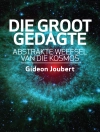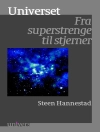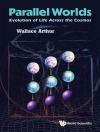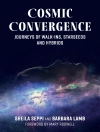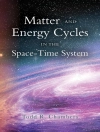‘Lasers’ are active ingredients of our modern life, but they are inconspicuous as they often go unnoticed. This intuitive introductory guide will tell you all you want to know about laser technologies in very diverse fields from nuclear and particle physics to medicine, astronomy and ultra-precise metrology. The book is coherently focused on fundamentals, and is aimed to stimulate intuition about present and future applications, while unveiling the halo of myths around lasers. Written by reputable laser experts who think that science should be entertaining, this useful reference relies on simple analogies and illustrations rather than complex mathematics, and will be suitable for students and end-users of laser technologies, including novices.
Voted a CHOICE Outstanding Academic Title 2012
Daftar Isi
Preface
1. A Scenic Route through the Laser
2. Laser Coherence at Home
3. The Laser in Medicine
4. Lasers in Industry
5. Laser Time Capsule
6. Light in Matter (Coherent Motion, Attosecond Science, Collision and Nuclear Physics with Lasers)
7. High Power Lasers (Tazer/Teaser)
8. Laser Sensors (Nanotechnology, Lithography, Laser Gyros, Nanoscopes)
Index
Tentang Penulis
Jean-Claude Diels is a professor of Physics and Electrical and Computer Engineering at the University of New Mexico, USA. He has an M.S. and a Ph.D. in Physics Engineering from the University of Brussels, Belgium. His research areas include, among others, experimental investigations of ultrafast phenomena, the development of femtosecond laser sources, metrology with femtosecond laser pulses, nonlinear optics, and coherent interactions between light and matter. Professor Diels has published several books and book chapters including ‘Ultrashort Laser Pulse Phenomenon: Fundamentals, Techniques and Applications on a Femtosecond Time Scale’ (2006).
Ladan Arissian is Assistant Professor of Electrical and Computer Engineering at the University of New Mexico, USA. She was previously a Research Associate at the Physics Department of Texas A&M University, performing research in attosecond science at the National Research Council of Canada. She has obtained graduate degrees in various disciplines: an M.S. in Nuclear Engineering (Medical Imaging), and an M.S. in Theoretical Condensed Matter Physics, and she holds a Ph.D. in Optical Science and Engineering from the University of New Mexico (2007). Besides her interest in research, she has been involved in teaching from high school level physics to graduate courses in Optics. Dr. Arissian has published 40 articles and conference presentations, three book chapters and three patents in laser physics.


